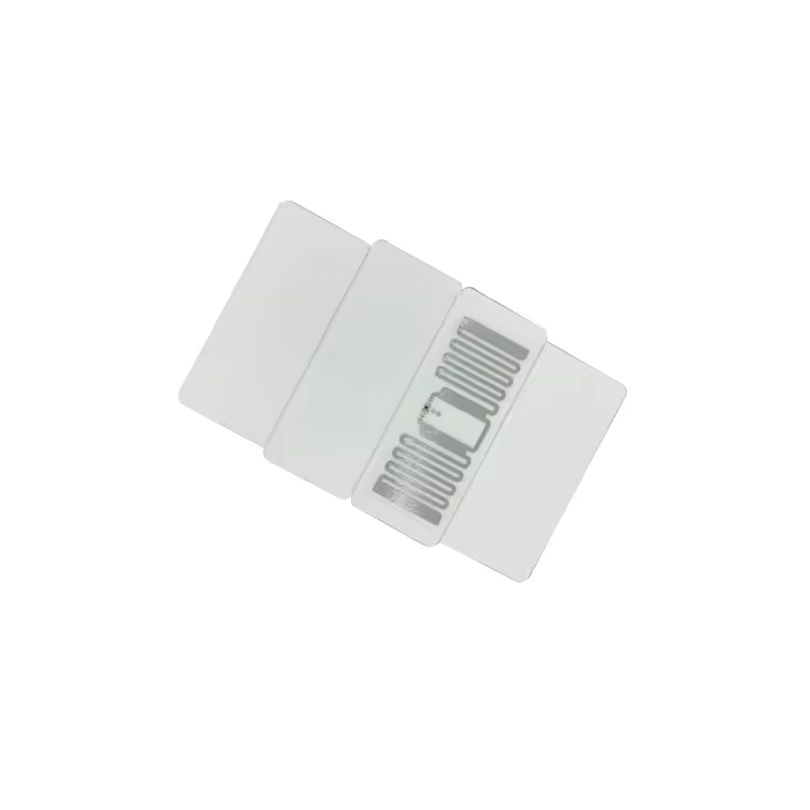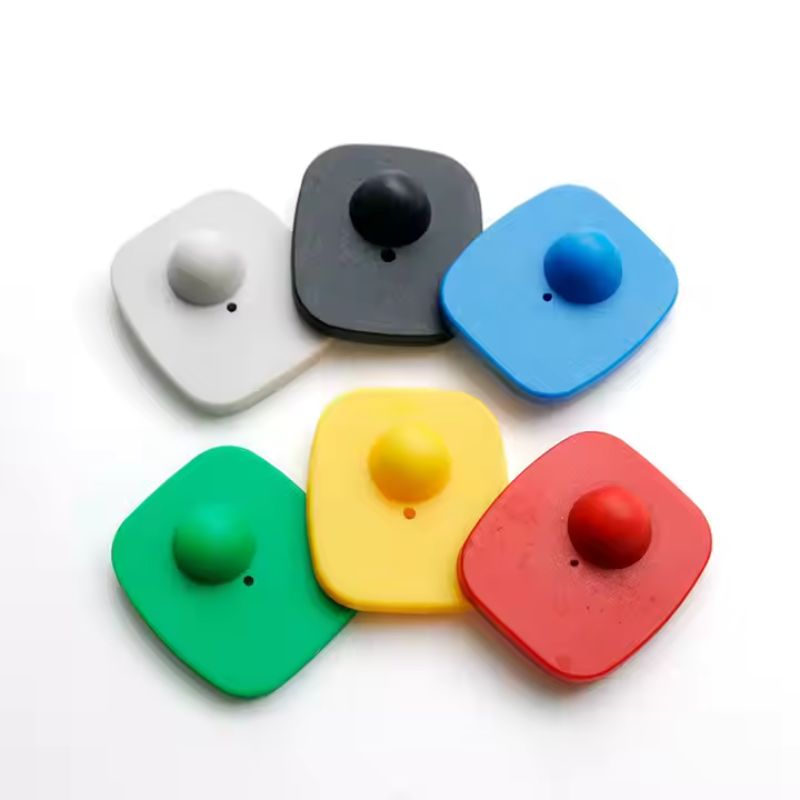
860-960MHZ UHF RFID Asset Tracking Management ABS Tag
RFID Asset Tracking Management – Rugged 860–960MHz UHF ABS Tag
In industrial, commercial, and logistics environments, managing valuable assets efficiently and securely is critical. Traditional tracking methods — manual logs and barcodes — are slow, inaccurate, and offer limited visibility. That’s where our 860–960MHz UHF RFID ABS Tag steps in.
Engineered for durability, long-range performance, and seamless integration, this high-performance RFID tag is designed for modern RFID Asset Tracking Management systems. Built with tough ABS housing and operating in the global UHF band, it delivers real-time tracking, better control, and improved ROI for operations of any scale.
Why Choose Our RFID Asset Tracking Tags?
Our RFID ABS tag offers a proven, reliable solution for harsh environments where precision and durability are non-negotiable. Here’s why our RFID tag stands out:
- EPCglobal Class 1 Gen 2 (ISO 18000-6C) certified
- Global UHF frequency support (860–960 MHz)
- Durable ABS housing with IP67/IP68 environmental protection
- Long-range readability (up to 15+ meters)
- Available in various sizes and mounting options
- Compatible with leading RFID readers and software platforms
Benefits of RFID Asset Tracking Management with ABS Tags
- Real-Time Visibility & Accuracy
Quickly locate assets across your warehouse, job site, or facility using RFID portals or handheld readers. No line-of-sight required — scan hundreds of assets in seconds. - Industrial Durability
ABS plastic housing protects the RFID chip from impacts, moisture, dust, and chemicals. Ideal for tough environments like construction sites, warehouses, and transport vehicles. - Reduced Labor & Manual Errors
Automate check-in/check-out, perform rapid cycle counts, and eliminate time-consuming manual audits — saving thousands in labor and reducing inventory discrepancies. - Enhanced Security & Loss Prevention
Track movement across locations, flag unauthorized transfers, and deter asset theft with real-time monitoring. Pair RFID tags with access control systems for added protection. - Lifecycle Tracking & Maintenance Integration
Link each RFID tag to asset records for service history, calibration schedules, or compliance data — improving uptime and extending asset life.
Feature Specification
| Feature | Specification |
| Frequency Range | 860–960 MHz (UHF Global Band) |
| RFID Standard | EPCglobal Class 1 Gen 2 / ISO 18000-6C |
| Chip Options | Impinj Monza M700 series, NXP UCODE series (customizable) |
| Memory | EPC: 96–496 bits; TID: unique ID; User Memory: Up to 512+ bits |
| Read Range | Up to 15+ meters (reader/environment dependent) |
| Housing Material | High-durability ABS plastic |
| Mounting Methods | Adhesive, Screw Holes, Cable Tie Slots |
| Dimensions | Common sizes: 50x50x5mm, 100x25x8mm, or custom |
| Environmental Protection | IP67 / IP68 (dust and water resistant) |
| Operating Temp | –40°C to +85°C (–40°F to +185°F) |
| Chemical Resistance | Resistant to oils, solvents (verify specific use cases) |
| Impact Rating | High impact resistance (vibration/handling rated) |
| Lifecycle | 10+ year data retention, 100,000+ write cycles |
Applications: Where to Use These RFID Tags
Industrial Facilities: Monitor assets in harsh manufacturing environments
Logistics: Track containers, pallets, and RTIs across the supply chain
Construction: Tag power tools, site equipment, and rental gear
IT/Office Assets: Label high-value IT devices or mobile workstations
Government & Utilities: Maintain visibility over mobile fleets and field assets
Maintenance: Link tags to service history, calibration records, or inspection logs
Ready to Improve Your Asset Tracking?
Switch to smart RFID-based tracking with our rugged 860–960MHz UHF ABS tags and transform your asset management processes.
- Gain real-time visibility
- Prevent losses and shrinkage
- Reduce labor costs
- Improve compliance and audits


FAQ
Can this RFID tag be used outdoors?
Yes. It is rated IP67/IP68 and built to withstand extreme temperatures, dust, moisture, and mechanical impact.
What types of readers are compatible with this tag?
Any UHF RFID reader compliant with EPCglobal Gen 2 / ISO 18000-6C standards.
Can the tag store custom data like maintenance history?
Yes. The user memory section can store relevant data like calibration dates, asset conditions, or location IDs.
How is the tag mounted to assets?
Tags can be attached using high-strength adhesives, screws/rivets, or cable ties — depending on the asset type and surface.
Is this tag suitable for metal surfaces?
This model performs well on plastic, wood, and composite surfaces. For direct-on-metal applications, we offer specialized anti-metal UHF RFID tags.
Get Your Custom RFID Tags
As a leading custom RFID tag manufacturer, we craft solutions based on the unique needs of your operation. We offer a wide range of customization options, including material, size, frequency, encoding, and read distance, ensuring each RFID Tag is perfectly customized to your requirements. No matter what application you use RFID tags for, we can provide rugged, reliable RFID tags that meet the highest quality and durability standards. Here are the main ways we customize RFID tags to fit your needs.

Material Selection
Material is key for customizing RFID tags. Plastic works in harsh conditions, while softer materials suit delicate spaces. Different materials also affect signal performance. Pick what fits your use case to ensure your tags last and work reliably.

Customized Size
Size shapes usability. Small tags fit tight spaces or tiny items, while larger tags are easily read. In crowded areas, sleek tags prevent clashes. Align shape and dimension with your goods for visibility, convenience, and performance.

Frequency Requirements
Choose LF, HF, or UHF based on read range, speed, and interference. LF and HF resist metals and liquids but have shorter ranges. UHF offers an extended range yet may face signal blocks. Match frequency to your environment for reliable performance.

Reading Distance
Define the distance at which you have to read the tag. Short distances work for retail checkouts, while warehouses may need meters of coverage. Antenna design, reader settings, and power outputs affect range.Adjust these factors to capture data accurately at the distance you need.

Encode
Plan how data is stored on each tag. Some only hold an ID, while others contain detailed info. Decide if you need a simple EPC or added user memory. Ensure your chosen format works with existing software. Proper encoding streamlines processes and slashes errors.

Application Environment
Consider real-world conditions. Temperature swings, humidity, and chemicals can degrade tags. For outdoor use, opt for UV-resistant casings. In healthcare or food settings, ensure compliance with safety rules. Matching your tags to the environment maximizes their lifespan.
Related Products
Customize any RFID tags from our factory to meet your requirements.



